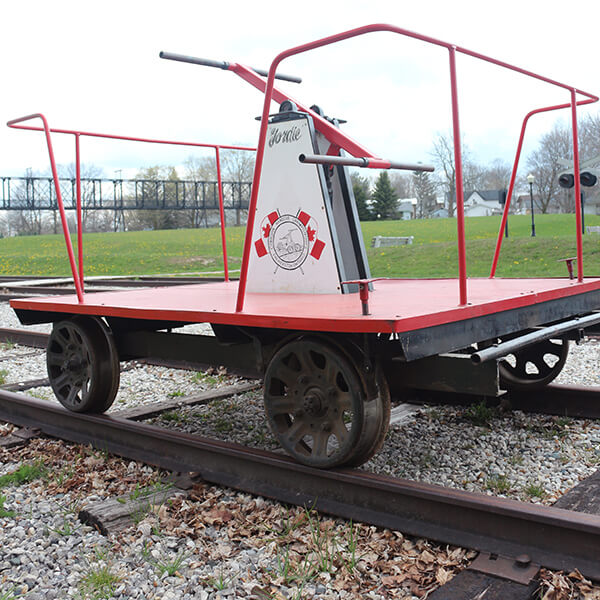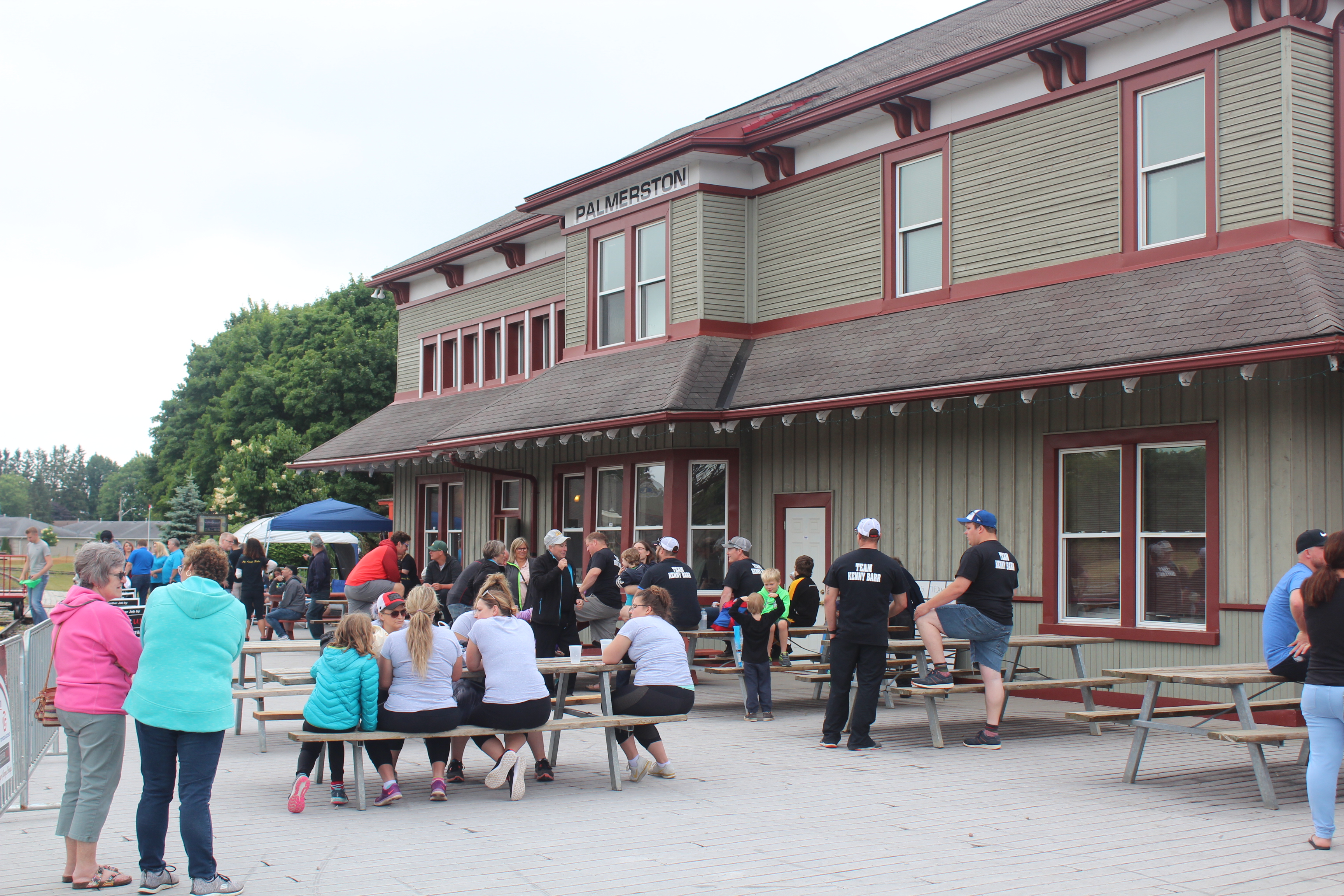Handcar Races
Past Handcar Race Winners
2018
The 2018 Canadian Championship Handcar Races took place June 23, 2018.
Wightman • TG Minto • Coverups Flooring • MSW • Mayor’s Charity Golf Tournament • Mayor George Bridge
2017
The 2017 Canadian Championship Handcar Races took place June 24, 2017.
Wightman Telecom, Minto Express, TG Minto, Grant’s Service Centre, Ashland transport, Palmerston Pizza Pizza, Esso, Coverups Flooring, RBC Royal Bank (Harriston Branch), Edge Automotive, Mayor’s Charity Gold Tournament, Palmerston Agricultural Society and Mayor George Bridge
2016
The 2016 Canadian Championship Handcar Races took place August 20, 2016.
Congratulations to this year’s winners: the “Train Wrecks”!
Coach House Realty
Edge Automotive
Grant’s Service Centre
ESSO / Pizza Pizza
Palmerston Motor Sports
Rock’s Antiques
Askett Appliance Centre

2015
In 2015, the handcar races returned after a 9 year hiatus. Six teams raced throughout the day, enjoying every second. Congratulations to our first place winners, Emerald Coatings, and 2nd place finalists Whiskey Business.
Mike’s Decor
Palmerston Home Hardware
Roundhouse Restaurant
Deb’s Hair Design
Small Town Pizza
Palm Garden Restaurant
HairWorks
Krown Palmerston
Norgan Theatre
Solutions!
Palmerston’s Handcar Races
The object of the Canadian Championship Handcar Races is to cover 250 meters of track (150 meters in the Masters categories) in the fastest time possible. Each team consists of 4 pumpers and 1 pusher and will race in 2 qualifying heats on the Saturday, and then advance to the finals on Sunday. The races take place in front of the old Palmerston CNR station (now the Museum) and under the long pedestrian bridge, where those not competing can cheer on their favourite teams.


Each car weighs about 800 lbs. and can achieve speeds of 35 miles per hour.
They volunteered to build the handcars for the Town to help save on the cost of buying new ones. To help honour and thank these two volunteers, the handcars have been named “Hal” and “Gordie.” The current style of the handcars evolved from the metal handcars of the 1950s to a style modified for racing in the 1970s.
The History of Handcars
A handcar’s typical design consists of an arm that pivots, in a seesaw-like motion, on a base, which the passengers alternately push down and pull up to move the car. It may sound and look easy, but using a handcar can provide quite the workout! In other parts of the world, handcars are also known as a pump trolley, a pump car, jigger or a Kalamazoo.
Velocipedes have both foot pedals and handles. However, instead of using a pumping motion like you would on the handcars, the velocipede is propelled by pushing and pulling the handle bars and while also pedalling in the manner of a bicycle. The velocipede is also characterized by having 3 wheels instead of 4 like the handcars. This allowed for the velocipede to be lighter and easier for one man to remove it from the track if a train were coming, and to turn it around to head back to the main station.
The Museum currently has one Velocipede on display. It was kindly donated by Carl K. Bales of Lucknow.
The Palmerston Railway Heritage Museum is a non-profit organization managed by volunteers.
Follow Us on Instagram!
















